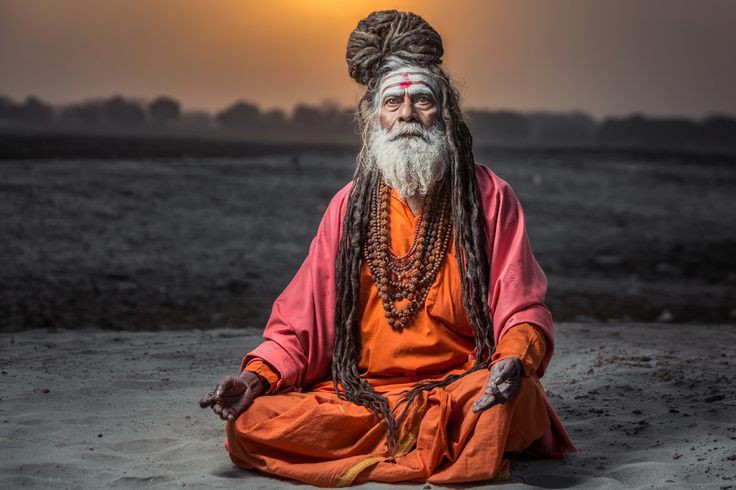Introduction: Kashi's Importance
Kashi, which is often referred to as Banaras or Varanasi, is among the world's oldest cities to have been inhabited continuously. Hindus associate Kashi, which is situated on the banks of the holy Ganges River, with great spiritual, cultural, and historical significance. There, life and death are thought to combine into a divine cycle, hence the names "Eternal City" and "City of Light." Millions of followers still carry strong spiritual ties, long-standing customs, and ancient rituals with them wherever they go in this hallowed region. Applying **Chandan Tilak**, a mark of sandalwood paste applied to the forehead by pilgrims, priests, and devotees in Kashi, is one such ancient and highly esteemed custom.

There is great spiritual, religious, and cultural value to the Chandan Tilak practice. It is more than just a pretty decoration; it has deep symbolic meaning that stands for purity, love, and the union of the human spirit with the divine. This article will examine the history, meaning, varieties, and customs of the Chandan Tilak in Kashi, as well as the effects it has on the participants in this revered custom.
Chandan Tilak's Spiritual Essence
“Tilak” is a word derived from the Sanskrit word 'Tilaka,' meaning a symbol or mark. Within Hinduism, a "tilak" is a mark applied to the forehead or other body areas serving as a cultural and religious emblem. Sandalwood, called "Chandan" in Sanskrit, is used to make the Chandan Tilak, a paste that is thought to have cooling and cleansing qualities. Because of its aroma, calming influence, and symbolic meaning of purity and devotion, Chandan is frequently used in Hindu rites and festivities.
The forehead, that is, the area between the eyebrows (called in yoga traditions the "Ajna Chakra" or "third eye"), is said to be the seat of consciousness, knowledge, and spiritual awakening. At this time, using Chandan Tilak is believed to help induce a deeper connection with the divine by calming the mind, activating spiritual energy, and assisting with meditation.
The Source and Mythical Setting
Ancient Indian texts and mythology are the source of Chandan Tilak's application. Based on allusions found in epics like the Mahabharata and Ramayana, as well as the Vedas and Puranas, it is thought to be a tradition that dates back thousands of years. Several mythological tales have renowned sages, saints, and deities such as Lord Vishnu and Lord Shiva, together with their followers, wearing Tilak on their foreheads as a symbol of their steadfast dedication to dharma (righteousness) and their abiding love for the Supreme Being.
The mythology surrounding the use of Tilak is most famously associated with the tale of Lord Vishnu and Goddess Lakshmi. According to legend, Lord Vishnu wore a Chandan Tilak on his forehead as a triumph, protection, and auspiciousness emblem after vanquishing the monster Madhu. After that, applying Chandan Tilak to oneself as a symbol of protection from evil forces and an invitation to divine blessings became customary among devotees.
Devotees of Lord Shiva put Bhasma (holy ash) and Chandan on their foreheads in Shaiva traditions, signifying the eradication of ego and worldly aspirations. A Shiva devotee's forehead with a Chandan Tilak is said to symbolize both the fleeting essence of life and the ultimate reality of spiritual immortality.
Applying Chandan Tilak in Kashi: A Ritual
Thousands of devotees go from all over India and the world to Kashi, the home of the well-known Kashi Vishwanath Temple, which is devoted to Lord Shiva, to offer prayers and seek blessings. The temple is a sacred place of pilgrimage with many carefully followed rites and customs. Applying Chandan Tilak is one of these procedures that is essential to engage in spiritual practices and being ready for darshan (seeing) of the god.
How to Make Chandan Paste: A little piece of sandalwood is usually rubbed with a little water or rose water on a stone slab to make the sandalwood paste that is used for the Tilak. This method not only yields the paste but infuses it with a contemplative quality as the grinding of the sandalwood is regarded as a kind of prayer in and of itself.
Tilak Usage at Kashi Vishwanath Temple: Before entering the Kashi Vishwanath Temple, worshipers purify themselves by taking a dip in the Ganges' sacred waters. Following their spiritual and physical purification, they approach Lord Shiva's shrine, where priests frequently give them Chandan to place on their foreheads. With the highest devotion, the Chandan Tilak is placed, indicating the devotee's readiness to accept divine benefits. Devotees frequently go from one hallowed location within the temple complex to another while sporting several Tilaks on various body parts, such as the neck, arms, and chest.
Kashi's Tilak Types: Among the believers in Kashi, one can observe several Tilak varieties. Every kind has a distinct meaning and is connected to various gods, religious groups, and ideologies:

Significance and Interpretation of the Chandan Tilak
Despite having strong religious roots, the Chandan Tilak is more than just a ceremonial practice. It is a potent symbol with multiple levels of significance that it conveys:
1. Verse of Divine Connection: One's relationship to the divine is perpetually reminded by the Chandan Tilak. Devotees symbolically affirm their faith and commitment to their spiritual journey by applying this holy mark to their foreheads.
2. Mind and Soul Purification: The cooling qualities of sandalwood are well-known, and they are thought to ease mental tension and emotional upheaval. Applying Chandan helps devotees focus more intently on their spirituality by pursuing mental, emotional, and behavioral cleanliness in addition to bodily purity.
3. Safeguarding and Fortunetelling: Chandan Tilak is revered in Hinduism as a protection against bad luck, evil spirits, and negative energy. Devotees who mark their foreheads with this holy emblem feel as though they are bringing wealth and protection from above into their lives.
4. Identity Symbol: Additionally, the Tilak represents spiritual identity. Within Hinduism, the Tilak is applied differently by various sects and traditions, serving as a distinguishing symbol that expresses the adherent's spiritual convictions and religious preferences.
Kashi's Cultural and Social Impact
The Chandan Tilak is significant in Kashi's social and cultural life in addition to its religious significance. The mark has served as a visible cue for piety and dedication for millennia. It has become ingrained in the daily routine of the Kashi people, serving as a sign of their spiritual legacy.
Participation in Festivals and Special Events: Chandan Tilak is applied with even more significance during major religious holidays like Maha Shivaratri, Navaratri, Diwali, and Sawan. Large crowds of devotees swarm temples, and the Chandan Tilak becomes an essential part of their sacred clothing. During these events, the Tilak is typically more ornate and might have extra kumkum (vermillion), turmeric, or ash marks.
The Chandan Tilak and the Sacred Pilgrimage in Kashi
Every year, millions of pilgrims visit Kashi, one of the holiest places on earth. The application of the Chandan Tilak and the darshan of **Lord Vishwanath** are two of the main rites of every pilgrimage to Kashi, as they are considered to be crucial components of the devotee's path to salvation.
The Panchkroshi Yatra: The Panchkroshi Yatra is a significant pilgrimage in Kashi, encompassing an approximate 80-kilometer circumference of the city with stops at multiple temples en route. At every important temple along this yatra, pilgrims apply Chandan Tilak to symbolize their spiritual advancement and to ask the gods' blessings.

The application of Chandan Tilak at the Kashi Vishwanath Temple, for a great number of pilgrims, marks the climax of their journey and their aspiration for moksha (freedom). As a result, the Tilak becomes a mark on the soul as well as the body.
Concluding Remark: Kashi's Everlasting Custom of Chandan Tilak
The Chandan Tilak is a representation of dedication, purity, and the close bond between the human soul and the divine that goes well beyond simple religious significance. The application of Chandan Tilak is still a popular practice in Kashi, a city where spirituality and tradition pervade every part of life. This is a living monument to the city's enduring spiritual legacy.
The Chandan Tilak continues to be a potent and respected symbol for the people who live in Kashi as well as the innumerable pilgrims that come to its hallowed grounds. It is a reflection of their identity as devotees, their ambitions towards spirituality, and their wish to always feel linked to the almighty. The Chandan Tilak tradition remains despite the passage of time and the ongoing changes in the world, serving as a constant reminder of the eternal truths that are the foundation of Hindu spirituality and the holy city of Kashi.












